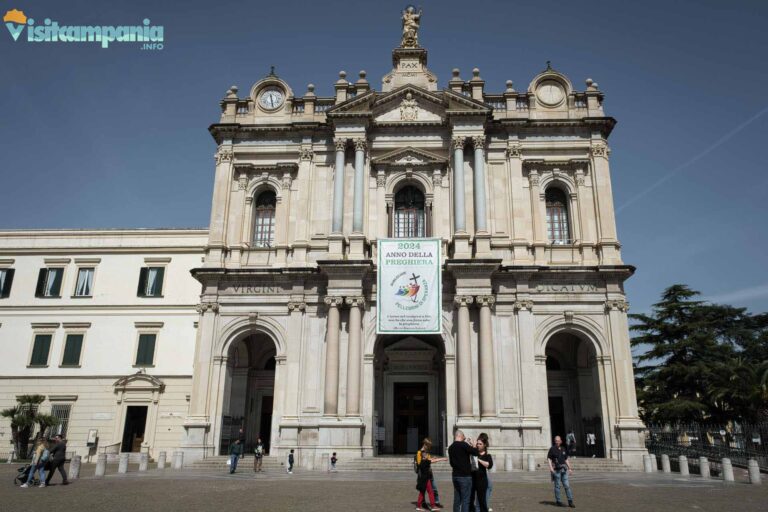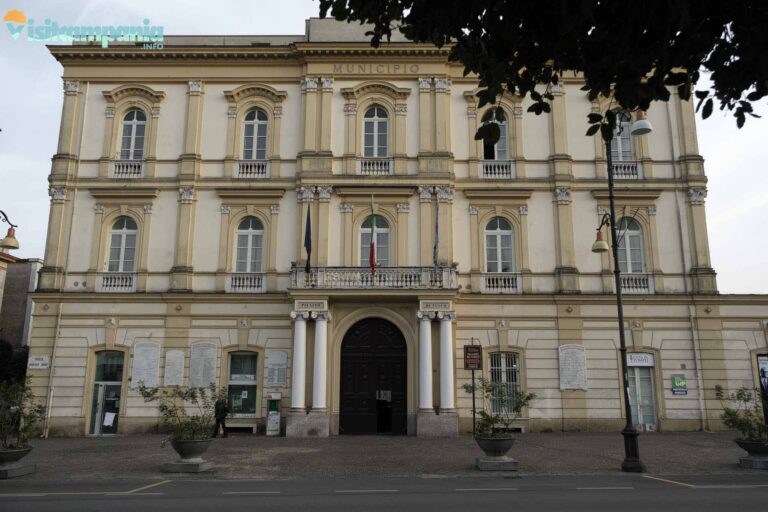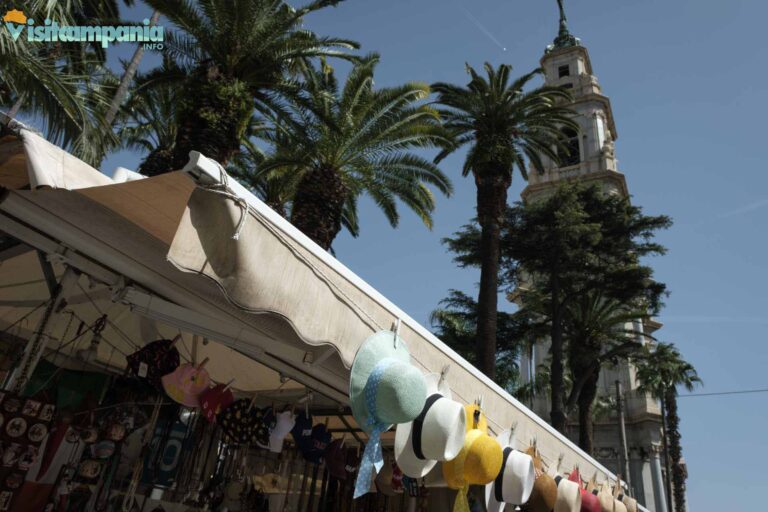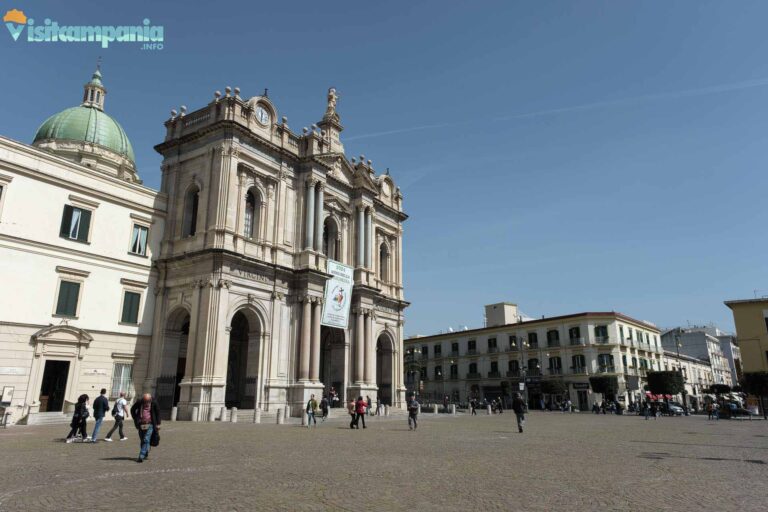What is Pompeii?
Pompeii is a small town south of Naples. It is located in a valley crossed by the Sarno river and between Mount Vesuvius, to the north, and the Lattari mountains to the south. Although it is very close to the coast, it does not directly overlook the sea. It is located in a particularly favorable position being only 25 km from Naples and 17 from Vico Equense, the first municipality of the Sorrento peninsula. Keep this in mind when planning your trip.
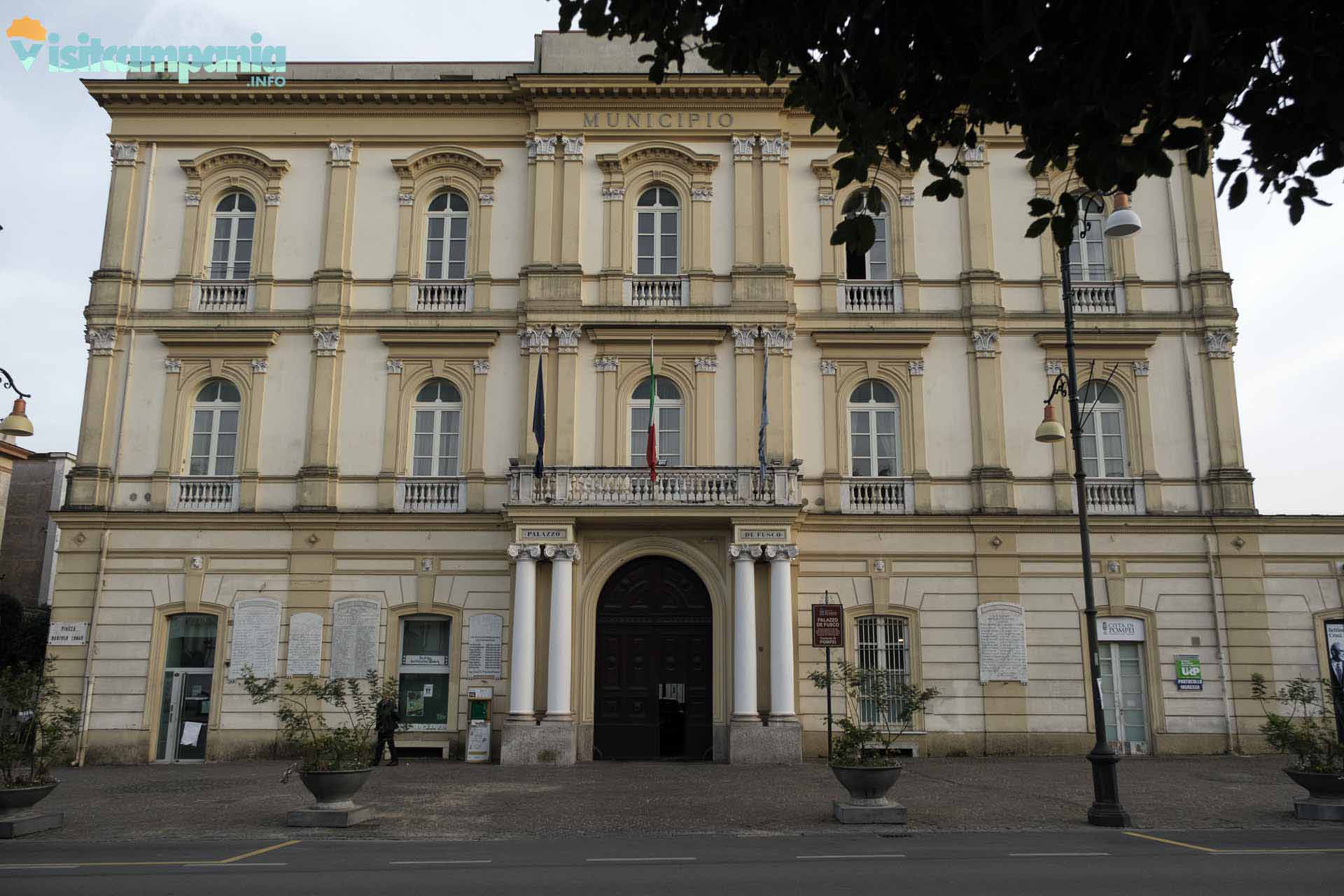
Things to see in Pompeii
Archaeological Park
The most famous tourist attraction is the Archaeological Park of Pompeii. It has been a UNESCO World Heritage Site since 1997 and one of the most visited monuments in Italy with over 3 million visitors a year. It covers an area of about 66 hectares, of which more than 50 have been brought to light. It allows you to relive, without any particular effort of imagination, the authentic atmosphere of a city of ancient Rome. It has surprisingly been preserved to the present day thanks to a layer of more than 7 meters of ash and lapilli that covered and destroyed it in theeruption of Mount Vesuvius on October 24, 79 A.D. This disastrous event, which caused over 16,000 deaths, nevertheless preserved the most important Roman remains that can be visited all over the world today.
The excavations began in 1748 at the behest of Charles of Bourbon and are still in progress, returning new wonders every year. In fact, the Archaeological Park is not only a very important tourist site but also an equally important place of archaeological and artistic research. In addition, in 2011 the Great Pompeii Project was approved, an extraordinary plan, co-financed by the European Union, for ordinary maintenance as well as consolidation and restoration of buildings and decorations.
Thus, today the Archaeological Park of Pompeii offers you the unique opportunity in the world to walk along ancient Roman roads, visit perfectly restored patrician domus, access the ancient gladiator barracks or enter the meanders of the amphitheater. In addition, still within the archaeological area, the Antiquarium, a modern exhibition structure, houses the most recent findings of the excavation activities, although most of the finds are exhibited at the National Archaeological Museum of Naples.
Finally, especially in the summer, the Archaeological Park hosts events and temporary exhibitions of great impact and suggestion.
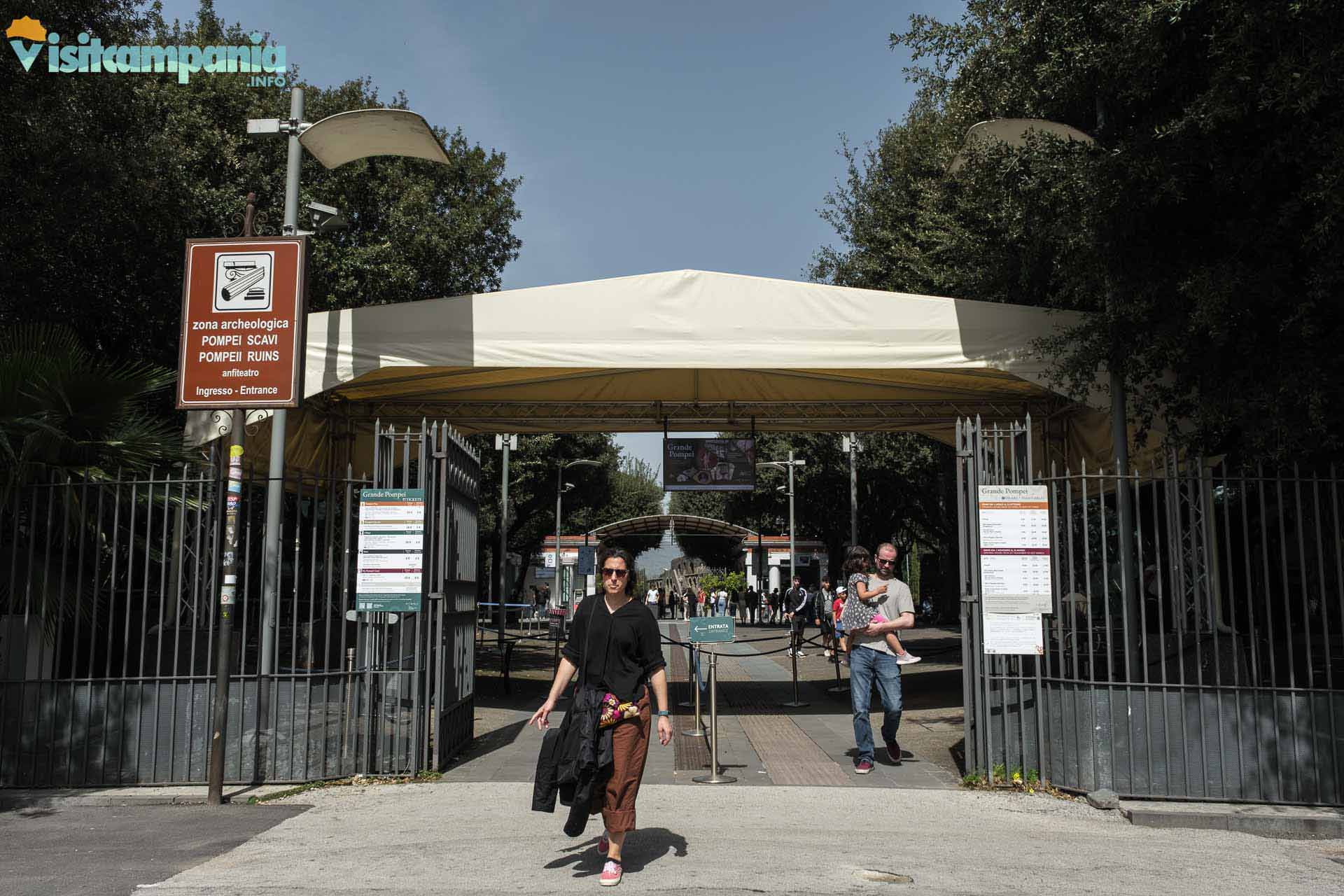
Sanctuary of the Blessed Virgin of Pompeii
The other amazing attraction that Pompeii can offer visitors is the Pontifical Sanctuary of the Blessed Virgin of the Holy Rosary. The Sanctuary, although presenting various aspects of artistic and cultural interest such as the Cantoria and the symphonic organ, the decorations of the central nave or the large dome, is above all a place of worship and prayer. Like the Sanctuary of Loreto, it is one of the most important Marian places in Italy and attracts more than one and a half million pilgrims from all over the world every year.
The Sanctuary was built at different times, with the original one erected between 1876 and 1891 and measuring only 420 square meters. Subsequently, in order to accommodate the large number of faithful, it was enlarged between 1934 and 1939, going from one to three naves and maintaining the original Latin cross structure. Currently, the interior has an area of 2,000 square meters and can accommodate about 6,000 people.
Thehistory of the sanctuary is linked to that of Blessed Bartolo Longo, co-founder of the sanctuary together with his wife, Countess Marianna Farnararo de Fusco. Beatified by Pope John Paul II in 1980, he dedicated his life to charity and the spread of Marian devotion. In addition to the foundation of the sanctuary in general, he was responsible for bringing to Pompeii, from the convent of the Rosariello to Porta Medina in Naples, the venerated icon of the Madonna now placed on the high altar. As of 2018, devoted visitors can explore the Founder’s study and bedroom within the Sanctuary’s Offering Room. In addition, they have the opportunity to observe a replica of the first version of the Supplica, written by Bartolo Longo in 1883.
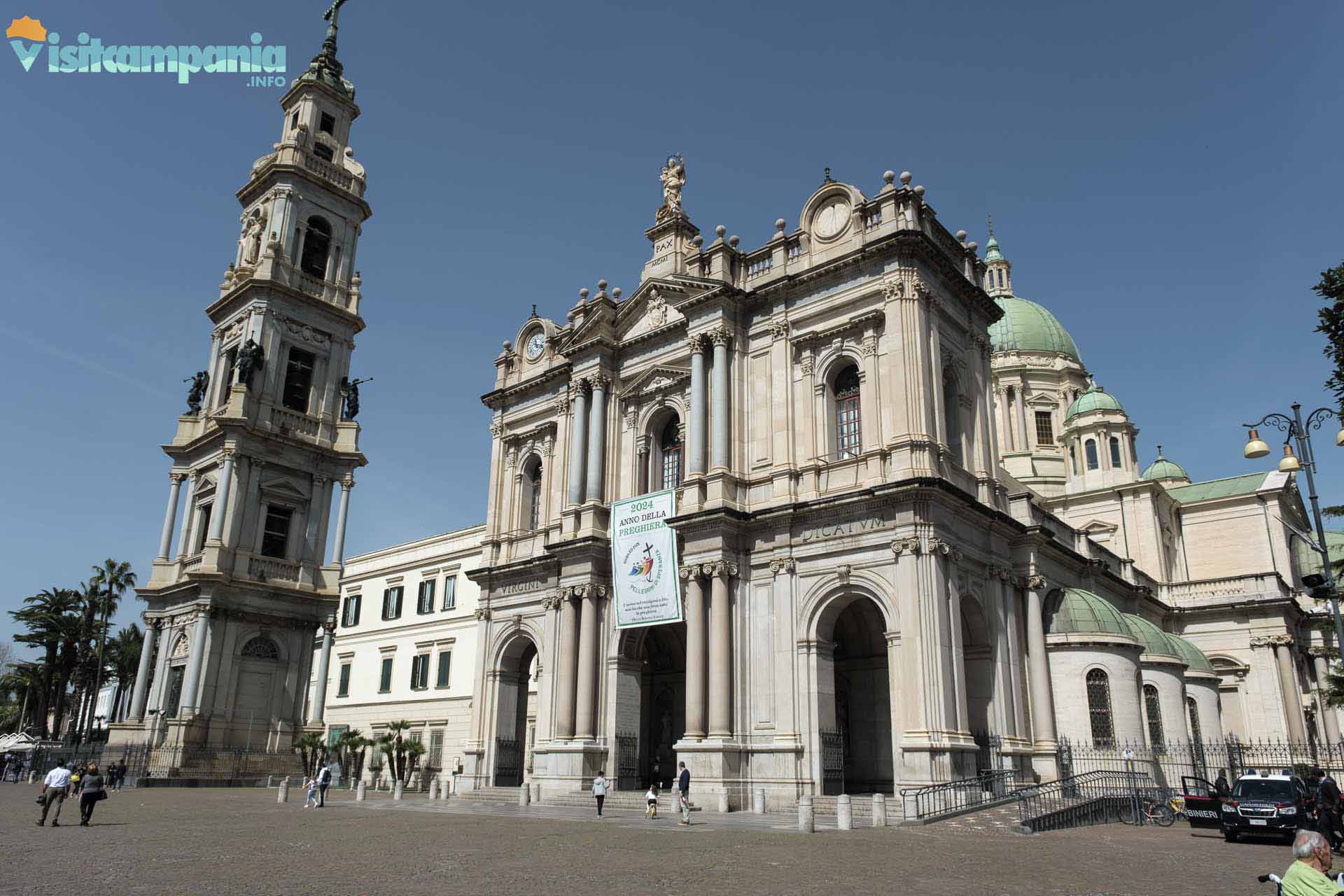
Brief historical notes on the city of Pompeii
The history of Pompeii begins in the eighth century BC. C. with a small settlement built by Greek migrants on the slopes of Vesuvius, along the course of the Sarno river. Towards the middle of the fifth century B.C. C. the town, which in the meantime had grown in importance and size, entered the orbit of the Samnites. Obviously, he sided with them in the wars against the young republic of Rome (4th – 3rd century BC). After the defeat of the Samnites, it entered the Roman orbit as a partner, preserving a wide autonomy.
The second century B.C. saw a great economic and demographic development of the town thanks to the export of oil and wine.
At the outbreak of the Social War (91 – 88 B.C.), which saw many peoples of Italy who had been partners of Rome until then opposed it, Pompeii joined the league of rebels. However, despite a strenuous resistance witnessed by the strengthening of the city walls, Pompeii succumbed and was conquered by Sulla in 89 BC.
Roman Pompeii
In 80 B.C., Pompeii definitively entered the Roman orbit and obtained its citizenship.
We have thus reached the last very eventful years of the history of the ancient city of Pompeii.
In 59 A.D., following a violent brawl between Nocerini and Pompeians in the amphitheater of Pompeii, the consuls forbade any gladiatorial spectacle for ten years. This is one of the first documented daspos in history.
In 62 A.D. it is the turn of a violent earthquake that causes serious damage not only to Pompeii but also to Herculaneum and Stabiae.
This brings us to the fateful 24th of October 79 A.D., but according to some it is the 24th of August. A devastating eruption of Vesuvius destroys the cities of Pompeii, Herculaneum, Stabia and Oplontis in just 3 days, burying them under a layer of more than 10 meters of pumice, ash and lapilli. In reality, the fate of Herculaneum was different and, perhaps, worse. It was, in fact, hit by a toxic cloud of hot gases, ash and water vapor, now known as a pyroclastic landslide, which instantly vaporized every living being. Where there were thriving Roman cities, in early November 79 A.D., only a barren steaming expanse remained.
From the eruption to the present day
In the Middle Ages , small settlements began to reappear, as evidenced by the discovery of Byzantine remains. These settlements, however, are located in a different place than the original Pompeii. The position is raised above the unhealthy banks of the Sarno, which were reclaimed only during the Bourbon era.
To see the birth of modern Pompeii we must, however, wait until the end of the nineteenth century, that is, 1891, the year of the consecration of the Sanctuary of the Blessed Virgin of the Rosary around which the new city slowly developed.
Finally, on 29 March 1928 the municipality of Pompeii was established, subtracting part of the territory from the pre-existing municipalities of Scafati, Torre Annunziata, Boscoreale, Gragnano and Castellammare di Stabia.
Finally, remembering that Vesuvius is an active volcano, Pompeii is included in the red zone, i.e. the area considered to be at maximum volcanic risk and the subject of a national emergency plan supplemented by an evacuation plan.


